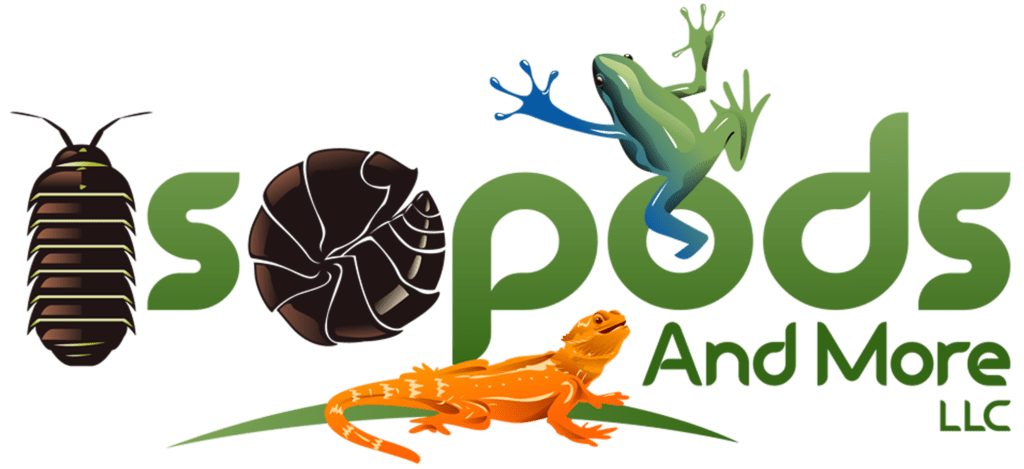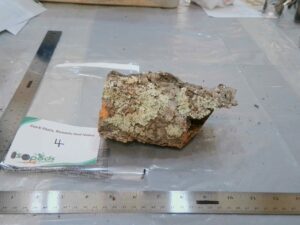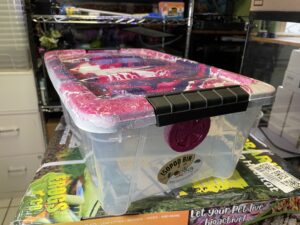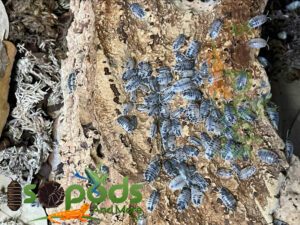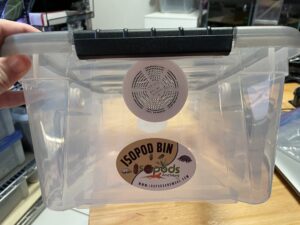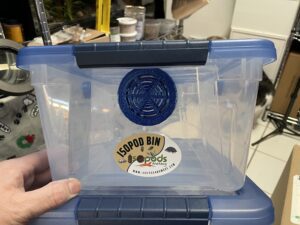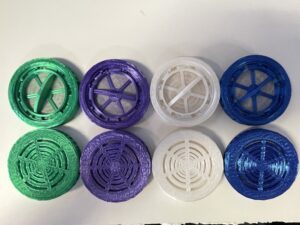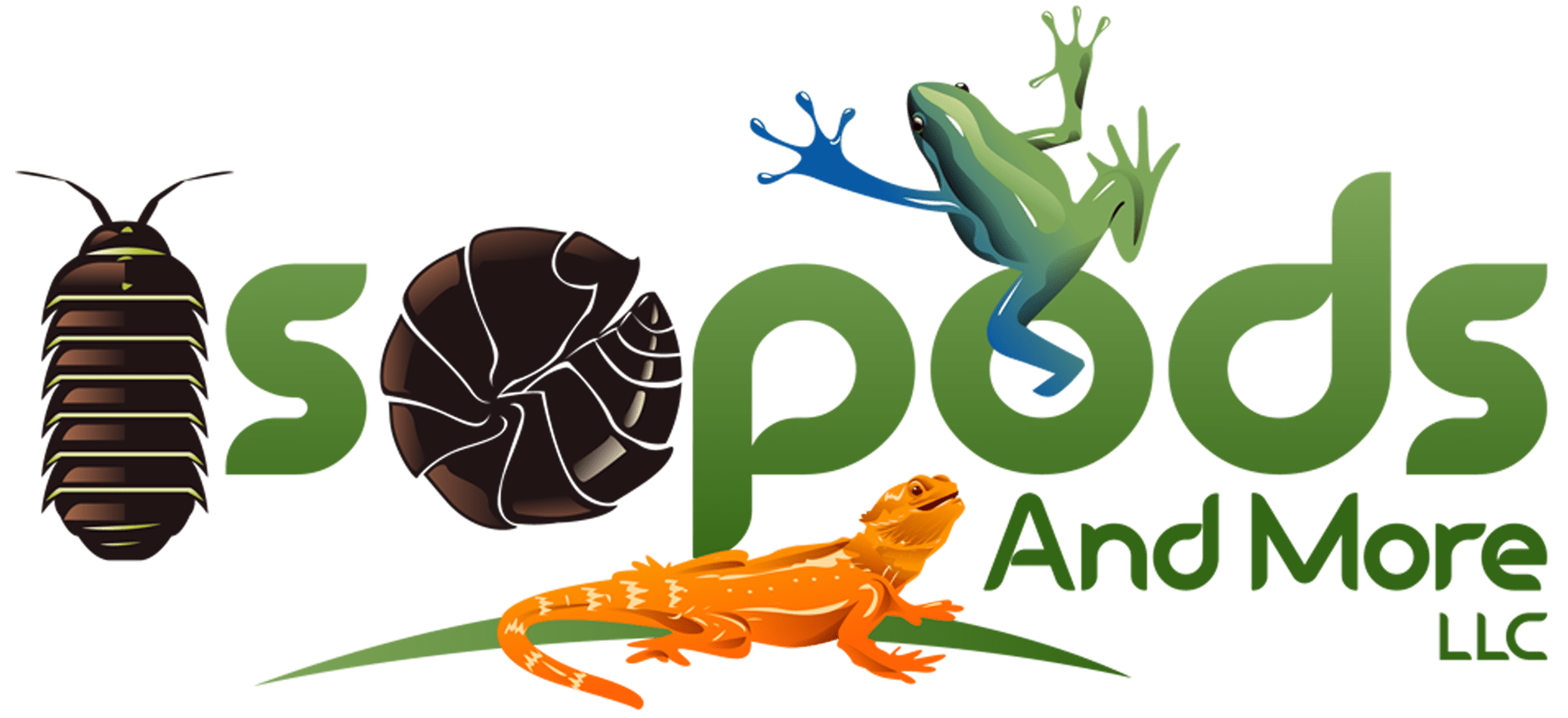Have you ever wondered how to properly care for isopods? Look no further than “The Ultimate Guide to Isopod Care.” This comprehensive guide provides valuable information on all aspects of isopod care and breeding, ensuring that you have the knowledge and tools to create a thriving habitat for these fascinating creatures. Whether you’re a beginner or an experienced isopod enthusiast, this guide is your go-to resource for all things isopod. From creating the perfect environment to understanding their unique feeding and breeding habits, you’ll find everything you need to know in this ultimate guide. So, let’s dive into the world of isopod care and discover the secrets to keeping these incredible creatures happy and healthy.
Choosing the Right Isopod Species
Researching Different Isopod Species
When it comes to choosing the right isopod species for your needs, conducting thorough research is essential. There are various types of isopods available in the market, each with its own unique characteristics and requirements. Take the time to educate yourself on the different species, their natural habitats, and their care needs. Look for reputable sources such as books, online forums, and articles to gather as much information as possible before making your decision.
Considering the Desired Isopod Characteristics
Consider what you are looking for in an isopod species. Do you want a species that is small and easy to handle, or are you more interested in a species that has vibrant colors? Think about the size, appearance, and behavior that you find appealing in an isopod. Different species exhibit distinct characteristics, so be sure to choose one that aligns with your preferences and goals for keeping these fascinating creatures.
Evaluating the Care Requirements of Isopod Species
Before bringing any isopod species into your home, it is crucial to consider their care requirements. Each species has unique needs when it comes to factors such as temperature, humidity, substrate, and feeding. Assess your ability to meet these requirements, taking into account the available time, resources, and knowledge you possess. By selecting a species that aligns with your capability to provide proper care, you can ensure the well-being and longevity of your isopods.
Setting Up the Isopod Habitat
Selecting the Proper Enclosure
Once you have chosen an isopod species, the next step is to set up their habitat. Selecting the right enclosure is essential to create a suitable environment for the isopods to thrive. Depending on the species and the number of isopods you plan to keep, you may need a glass or plastic terrarium, a plastic storage container, or a custom-built enclosure. Consider factors such as ventilation, accessibility, and ease of maintenance when choosing the enclosure for your isopods.
Providing the Ideal Substrate
Isopods require a suitable substrate to burrow, hide, and maintain proper moisture levels. The type of substrate you choose will depend on the species you have selected and their natural habitat. Some popular choices for isopod substrates include coconut fiber, peat moss, leaf litter, and a mixture of organic materials. Research the natural habitat of your chosen isopod species to determine the most suitable substrate to replicate their preferred environment.
Creating a Suitable Moisture Level
Moisture plays a vital role in the health and well-being of isopods. It is important to create a suitable moisture level within their habitat to meet their hydration needs and facilitate proper molting. This can be achieved through misting the enclosure regularly, providing a water source such as a shallow dish, or utilizing a moisture-retaining substrate. Monitoring the humidity levels and adjusting as necessary will help ensure the optimal environment for your isopods.
Temperature and Lighting Needs
Maintaining an Appropriate Temperature Range
Isopods are ectothermic, meaning they rely on external sources to regulate their body temperature. It is crucial to maintain an appropriate temperature range within their habitat to ensure their metabolic functions and overall well-being. The optimal temperature range may vary depending on the isopod species, but generally, a temperature between 70°F to 80°F (21°C to 27°C) is suitable for many types of isopods. Use a thermometer to monitor the temperature and make adjustments accordingly.
Understanding the Role of Lighting
Lighting is another important factor to consider when setting up your isopod habitat. While some isopod species are more active during the day, others are nocturnal. Understanding the natural behavior and light requirements of your chosen species will help you determine whether they require artificial lighting or if ambient light from the room is sufficient. It is important to strike a balance between providing enough light for their activities and providing areas of darkness for rest.
Choosing the Right Light Source
If artificial lighting is necessary for your isopods, selecting the right light source is crucial. Many hobbyists find success using low-intensity LED lights, as they provide a gentle and energy-efficient solution. Avoid using lights that emit excessive heat, as this could lead to overheating and pose a risk to your isopods’ health. Experiment with different lighting options and observe how your isopods respond to find the most suitable light source for their specific needs.
Feeding Isopods
Identifying the Dietary Needs of Isopods
Isopods are detritivores, which means they primarily feed on decaying organic matter. In their natural habitats, they play a vital role in decomposing plant material and recycling nutrients. To meet their dietary needs, it is important to provide a varied and nutritious diet. Isopods can be fed a range of suitable foods, including leaf litter, rotting wood, fruits, vegetables, fish food, and commercially available isopod diets. Observing their feeding behavior and adjusting their diet accordingly will ensure they receive the necessary nutrients.
Offering a Varied and Nutritious Diet
To maintain optimal health and encourage breeding in isopods, it is crucial to provide them with a diverse and nutritious diet. Offering a variety of food sources not only ensures they receive a wide range of essential nutrients but also stimulates their natural foraging instincts. Experiment with different food items to find what your isopods prefer, and consider supplementing their diet with calcium-rich foods to support proper exoskeleton development.
Avoiding Harmful Foods
While isopods have a broad diet, there are certain foods that should be avoided. Avoid feeding them anything that is toxic or potentially harmful, such as foods treated with pesticides, moldy or rotten food, or anything that poses a choking hazard. Additionally, be cautious when introducing new food items, as some isopods may be more sensitive to certain ingredients than others. Pay attention to their reactions and remove any uneaten or spoiled food promptly to maintain a clean and healthy habitat.
Hydration and Humidity
Meeting Isopods’ Hydration Needs
Proper hydration is essential for the health and well-being of isopods. While they obtain moisture from their food and the surrounding environment, it is important to provide additional water sources to ensure they have access to adequate hydration. This can be achieved through the use of a shallow dish filled with dechlorinated water or by misting the enclosure to create droplets that the isopods can drink from. Regularly check the water source to ensure it remains clean and replenish it as needed.
Creating the Optimal Humidity Level
Maintaining the ideal humidity level within the isopod habitat is crucial for their respiratory function and overall health. Different isopod species have varying humidity requirements, so it is important to research the ideal range for your chosen species. This can be achieved by monitoring the humidity levels using a hygrometer and adjusting as necessary. Mist the enclosure regularly to increase humidity or provide a moist substrate to help regulate and maintain the desired humidity level.
Preventing Excessive Moisture
While isopods require a certain level of moisture, it is equally important to prevent excessive moisture within their habitat. Excessive moisture can create problems such as mold growth, bacterial infections, and the development of harmful parasites. Ensure proper ventilation and airflow within the enclosure, and be cautious not to oversaturate the substrate or leave standing water for prolonged periods. Maintaining a balance between hydration and moisture control will help provide a healthy environment for your isopods.
Cleaning and Maintenance
Regularly Removing Debris and Waste
Regularly cleaning the isopod habitat is crucial to maintain a clean and healthy environment for your isopods. Remove any uneaten food, feces, shed exoskeletons, and debris to prevent the buildup of harmful bacteria and mold. This can be done by spot cleaning on a daily basis and conducting a thorough cleaning of the enclosure on a regular schedule. Removing excess organic matter will help reduce the risk of disease and maintain optimal conditions for your isopods.
Maintaining Proper Hygiene in the Habitat
To ensure the overall hygiene of the isopod habitat, it is important to follow good hygiene practices when handling and maintaining the enclosure. Wash your hands thoroughly before and after handling the isopods to prevent the transfer of harmful bacteria. Avoid using harsh chemicals or cleaning products inside the enclosure, as these can be toxic to isopods. Instead, opt for natural and safe cleaning methods such as vinegar solutions or mild soaps when necessary.
Preventing Mold and Bacterial Growth
Mold and bacterial growth can be common issues in isopod habitats if the conditions are not properly maintained. To prevent mold and bacterial growth, ensure proper ventilation, maintain appropriate moisture levels, and remove any damp or decaying organic matter promptly. Additionally, avoid overfeeding your isopods, as excess food can lead to mold growth. Regularly monitor the habitat for any signs of mold or bacterial growth and take immediate action to address and rectify the issue.
Breeding Isopods
Understanding the Reproduction Cycle
Breeding isopods can be a rewarding experience for hobbyists, but it is important to understand the reproduction cycle of your chosen species. Isopods undergo a process called molting, where they shed their exoskeletons to grow. During this time, it is crucial to provide ample space, proper nutrition, and suitable environmental conditions to support the breeding process. Research the specific requirements of your chosen species to ensure you can provide the necessary conditions for successful breeding.
Providing Adequate Space for Breeding
To promote successful breeding, it is important to provide adequate space within the isopod habitat. This allows the isopods to establish their territories and create suitable microclimates for mating, egg-laying, and raising their young. Ensure the enclosure is spacious enough to accommodate the breeding population comfortably and provide hiding spots and substrates that mimic their natural habitat. Adequate space and resources will help create an environment conducive to breeding and ensure the well-being of the offspring.
Monitoring Breeding Conditions
Monitoring the breeding conditions in the isopod habitat is essential to ensure the health and success of the breeding population. Regularly check for signs of mating behavior, such as male isopods engaging in courtship rituals or the presence of eggs. Maintain optimal temperature, humidity, and food availability to support the breeding process. Observing the behavior and condition of your isopods will provide valuable insights into their reproductive cycle and enable you to make any necessary adjustments to maximize breeding success.
Handling and Interaction
Ensuring Isopod Safety During Handling
While isopods are generally harmless, it is important to handle them with care to ensure their safety and well-being. Avoid excessive handling or rough treatment, as this can cause stress or physical injury. When handling isopods, make sure your hands are clean and free from any substances that could be harmful to them. Gently scoop up or encourage the isopods to crawl onto your hands using a soft, damp brush or spoon. Handle them with gentle movements and avoid dropping or squeezing them.
Minimizing Stress for Isopods
Isopods are sensitive creatures, and excessive stress can negatively impact their health and behavior. Minimize stress by providing a stable and stress-free environment. Avoid sudden loud noises or vibrations near their habitat, as these can startle them. Additionally, refrain from overcrowding the enclosure, as this can lead to competition for resources and increased stress levels. Providing ample hiding spots and a calm, quiet environment will help create a stress-free atmosphere for your isopods.
Promoting Positive Interaction
While isopods are not typically known for their interactive capabilities, there are still ways to promote positive interactions with these fascinating creatures. Observing their behaviors, natural movements, and feeding habits can be an enjoyable and educational experience. Offer them safe objects to explore, such as clean leaves, branches, or cork bark. During feeding times, take the opportunity to watch them interact with their food and each other. Respect their natural behaviors and allow them to thrive in their environment, promoting a positive and enriching experience for both you and your isopods.
Common Health Issues
Identifying Signs of Illness
Monitoring the health of your isopods is crucial to catch any potential issues early on and address them promptly. Signs of illness in isopods can include lethargy, loss of appetite, abnormal behavior or movement, changes in color, or unusual discharge. Regularly observe your isopods and look for any signs of distress or changes in appearance. Promptly consult reliable sources or seek advice from experienced isopod keepers if you notice any concerning symptoms, as early intervention can greatly improve their chances of recovery.
Addressing Parasite Infestations
Parasite infestations can occur in isopods, especially if their habitat or food sources are contaminated. Common parasites that can affect isopods include mites and worms. If you notice signs of infestation, such as itching or irritated behavior, take immediate action to address the issue. Isolate affected individuals or groups to prevent the spread of parasites and seek appropriate treatment options. Consult with experienced hobbyists, consult reliable resources, or contact a veterinarian specializing in exotic invertebrates for guidance on parasite control measures.
Treating Common Isopod Health Problems
Isopods can occasionally experience health problems that require treatment. Common issues can include injuries, bacterial infections, or nutritional deficiencies. If you notice any signs of health problems, it is important to take swift action. Assess the severity of the issue and seek advice from knowledgeable sources or consult a veterinarian specializing in invertebrate care if necessary. Treatments may include wound cleaning, applying suitable topical solutions, or providing supplements to address nutritional deficiencies. Regularly assess the health of your isopods and take proactive measures to ensure their well-being.
Resources and Further Reading
Recommended Isopod Care Books
For further information on isopod care and breeding, consider exploring these recommended isopod care books:
- “The Isopod Handbook: Housing, Care, and Breeding of Terrestrial Isopods” by Orin McMonigle
- “Isopods in Captivity: Terrarium Mates and Biological Control Agents” by Peter Clausen and Robert Gansereit
- “The Complete Guide to Pet Isopods: A Comprehensive Guide to Caring for Woodlice as Pets” by Emma Thomson
Online Communities and Forums
Engaging with online communities and forums can be a valuable resource for isopod enthusiasts. Join forums such as “The Isopod Keepers” or “The Isopoda Forum” to connect with fellow hobbyists, share knowledge and experiences, and seek advice from experienced keepers. These platforms often provide a wealth of information, care guides, and breeding tips specific to isopods.
Specialist Expos and Events
Attending specialist expos and events focused on invertebrate care and breeding can provide an opportunity to learn from experts in the field. These gatherings often feature talks, workshops, and exhibitions dedicated to isopod care. Connect with local exotic pet expos or invertebrate-focused events in your area to expand your knowledge and gain exposure to the latest advancements in isopod care and breeding practices.
By following these comprehensive guidelines and educating yourself about the specific needs of your chosen isopod species, you can create a suitable habitat and provide the care necessary for their well-being. Remember to monitor their health, maintain optimal conditions, and seek advice from experienced sources to ensure the best possible care for your isopods. Enjoy the journey of being an isopod keeper and appreciate the fascinating world of these unique creatures.
